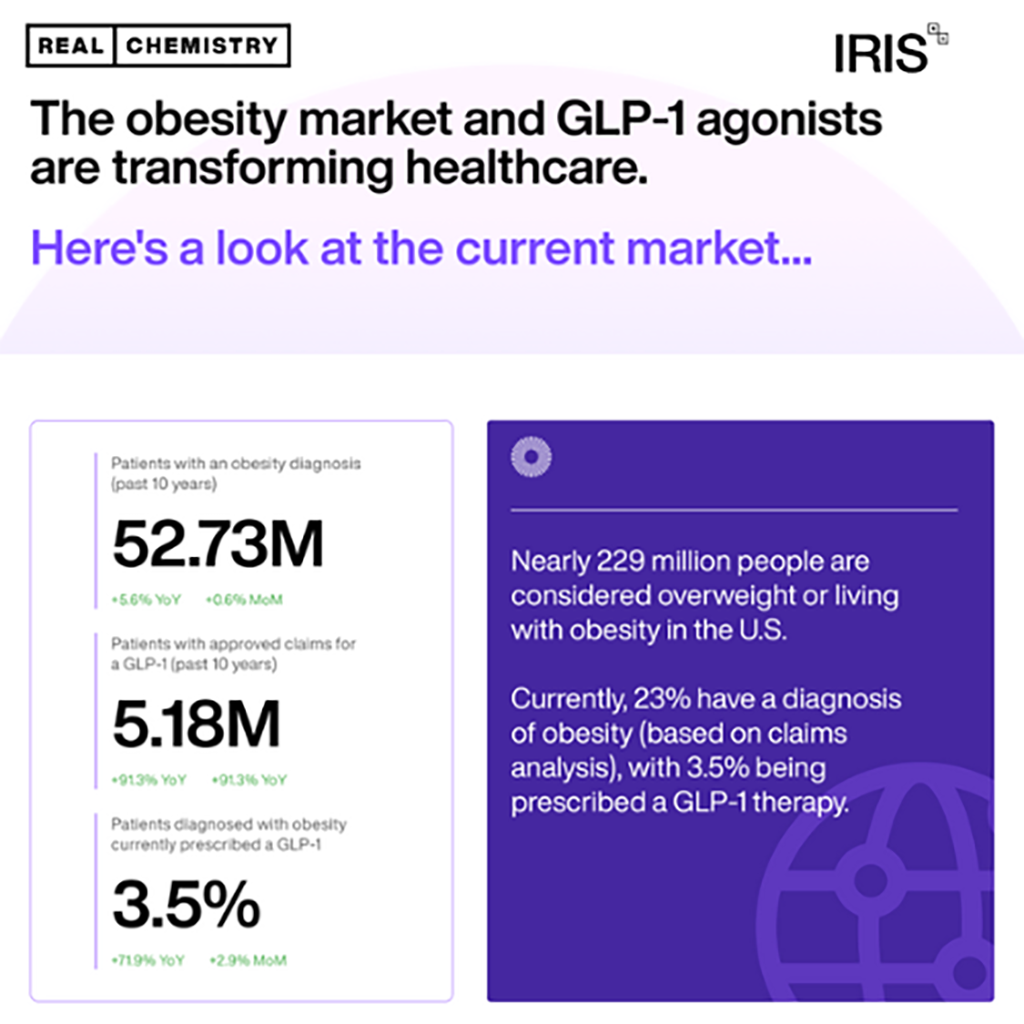Real Chemistry launched IRIS, a predictive analytics platform using AI to provide insights on GLP-1 drugs and the obesity market, on Tuesday morning.
IRIS is supported by Real Chemistry’s proprietary AI and analytics tools, offering users an annual subscription to a live dashboard, which is refreshed on a weekly basis, or access to companion market reports that are published every other month.
The first report from IRIS, the latest intelligence offering from the 2023 MM+M Agency 100 honoree, delves into the power of GLP-1 influencers as well as how healthcare companies and their respective marketing teams must adapt to the rapidly changing landscape.
One of the most notable findings from the report is how consumer behavior in relation to GLP-1 drugs differs from what is normally seen in healthcare.
In an interview with MM+M, Rita Glaze-Rowe, president of transformative healthcare markets at Real Chemistry, pointed out that patients using these drugs are now identifying themselves as GLP-1 influencers, posting about their experiences online and providing advice and recommendations to a growing pool of interested consumers.
As a result of this phenomenon, she said these influencers are able to monetize those content strategies – which are more fluid than has previously been seen in healthcare – and operate more like influencers of a beauty and lifestyle brand as opposed to a traditional pharma brand.

She also emphasized the importance of IRIS in terms of helping medical marketing and commercial teams understand whether this is a paradigm shift in the sector or passing fad and navigate future label expansions of GLP-1 therapies like Novo Nordisk’s Wegovy or Eli Lilly’s Mounjaro.
She said predictive analytics are critical when navigating the growing obesity market, especially when there are currently more than 100 active GLP-1 clinical trials and the market has been marked by frequent changes in recent months and years.
“We know that this market is moving with such speed – and in some cases such fierceness – that organizations are just reactive right now,” she said. “We want to allow organizations to become proactive and say, ‘If this is what’s happening today, this is what I anticipate will be around the next corner.’”
Rather than simply providing data for the sake of providing data, Glaze-Rowe added that Real Chemistry’s goal with IRIS is to organize data in a way that provides insights as a service for marketers.
Though she called obesity the “most relatable condition” in the U.S., she noted that the ongoing blending of obesity patients and GLP-1 consumers introduces the marketing community to several new microtrends that will take a while to fully unpack.
These include multiple factors that have contributed to the unprecedented demand for GLP-1 drugs, including the emotional and physical health effects of these treatments as well as the clinical research and cultural considerations.
Additionally, she said IRIS has indicated that there is growing frustration among HCPs when it comes to the management of GLP-1 drugs and the lack of access due to widespread shortages of the drugs.
These frustrations have compounded the burdens faced by physicians nationwide, she said, further driving issues related to burnout and pressure on the job.
In the near-term, Glaze-Rowe said Real Chemistry wants to see IRIS establish a “community of insight seekers” to help those who represent health brands be able to act on the information available to them.
“We have many organizations and many brands that operate within these categories that may not have the time to wait for six months worth of research or for data to be purchased to get into the analogs within their own organizations,” she said. “We’ve got marketing, commercial and medical affairs teams that need to act against this now.”







